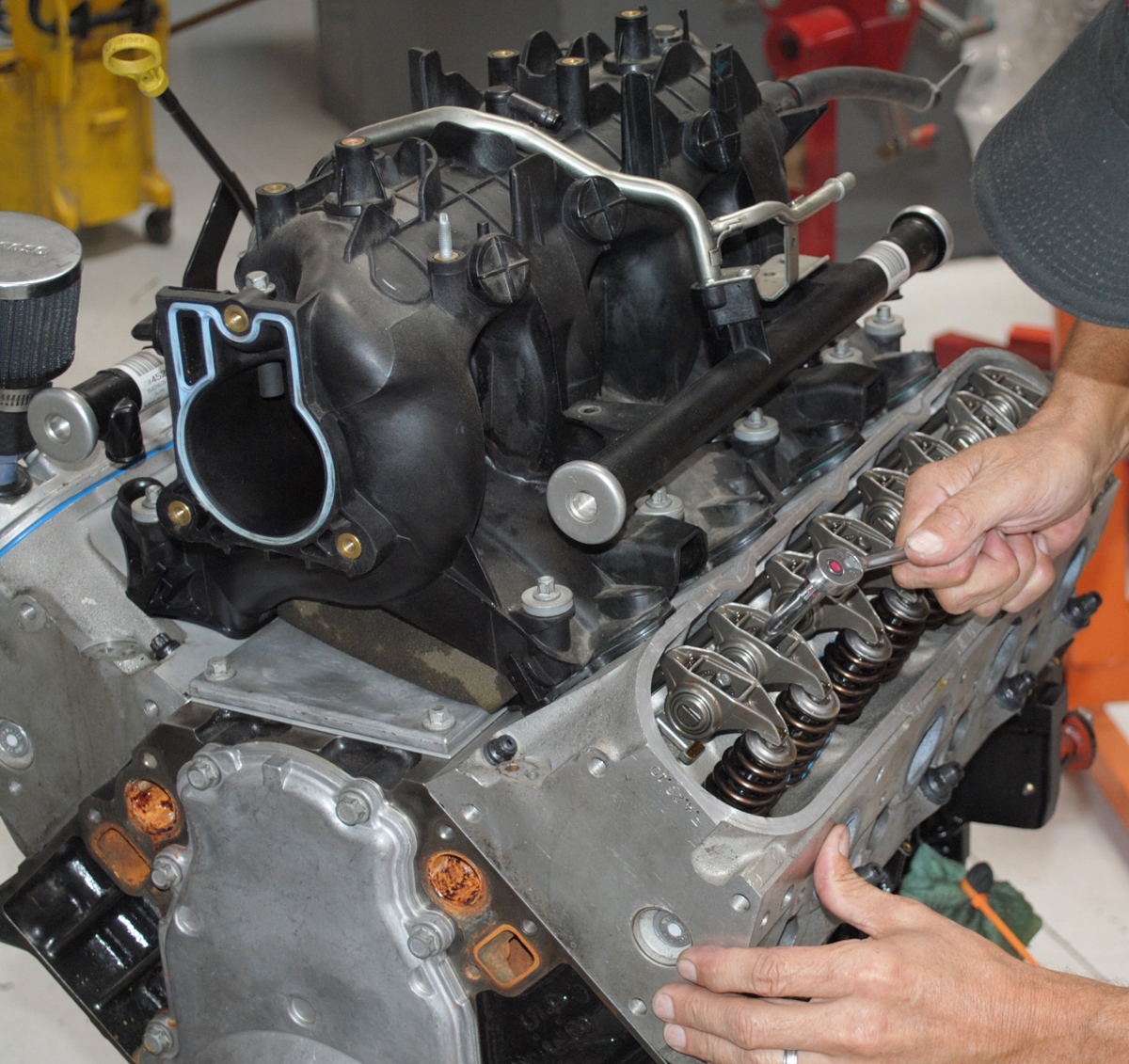Words & Photos By Richard Holdener
We will start by ending the suspense, as we had no intention of choosing between bolt-ons and the bottle and instead applied both to our 5.3L LM7. In fact, we went one better and stepped up the displacement as well, but technically speaking, the stroker components fit nicely in the bolt-on category anyway.
We all know that the right heads, cam, and intake will yield substantial performance dividends on almost any motor, but certainly on an LS application. When you combine the airflow improvements with increased displacement, things get even better. Now if you top all that off with some Zex happy juice, you wind up with one seriously fortified 5.3L.
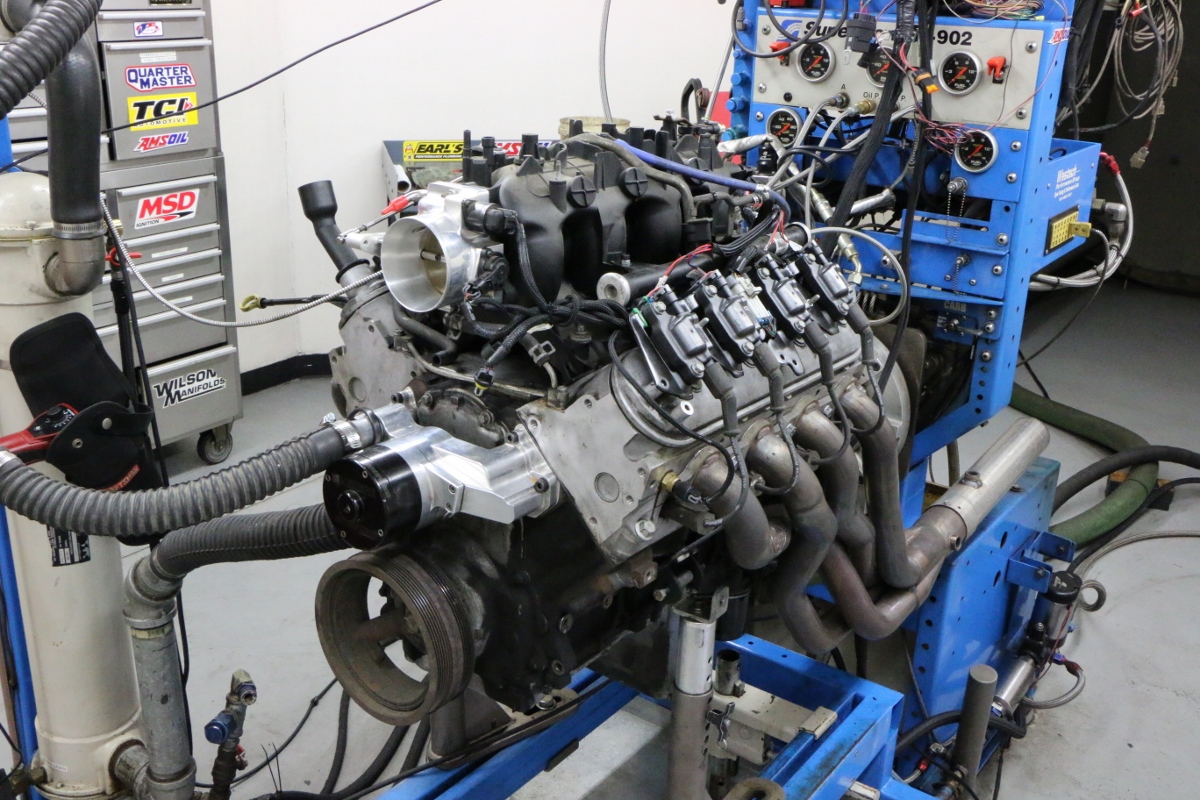
To get thing started, we ran our stock 5.3L LM7 on the engine dyno with headers, an open throttle body, and Meziere electric water pump. The otherwise stock 5.3L produced 353 hp at 5,200 rpm and 384 lb-ft of torque at 4,300 rpm.
While the discussion here has been primarily about power production, the combination also improved both idle quality and drivability. Let’s not forget the abundance of torque offered by the extra cubic inches, as the low-speed grunt is even more useful than peak power gains. Think about how many times you rev the motor out to redline versus the times you just stab the throttle and motor through the mid range. Yep, strokers are fun in the sun and a nitrous-injected version can be even more so.
How is a stroker able to improve idle quality and drivability, you ask? The key is the effect displacement has on relative cam timing. If we modified a typical 5.3L with ported heads, wilder cam timing and a decent intake manifold (like our FAST LSXRT), the result would not only be a motor looking to make peak power up near 7,000 rpm, but one with reduced idle quality and drivability. Such is the trade-off when making big power with little motors.
By contrast, if we increase the displacement of the 324c.i. 5.3L to a solid 383c.i, the extra displacement actually tames the cam timing. Using the same components as the high-rpm 5.3L, the larger 383 will make peak power much lower and will have much-improved idle quality and throttle response. Stab the throttle, and instead of waiting for the little 5.3L to come on the cam, you are rewarded with an abundance of torque. Remember, the stroker adds power everywhere, from right off idle all the way to redline.
A little math tells us that if we built a 475-hp 5.3L, using heads, cam, and intake, it would equate to 1.466 hp per cubic inch. If we applied that same efficiency to the larger 383, we would get 561 hp. Bigger really can be better!
To achieve the proper combination of displacement and efficiency, we started by disassembling and machining the 5.3L to accept stroker components from Speedmaster and Mahle. The 4.0-inch stroker crank and forged 6.125-inch rods came from Speedmaster, while the forged, flat-top slugs were supplied by Mahle.
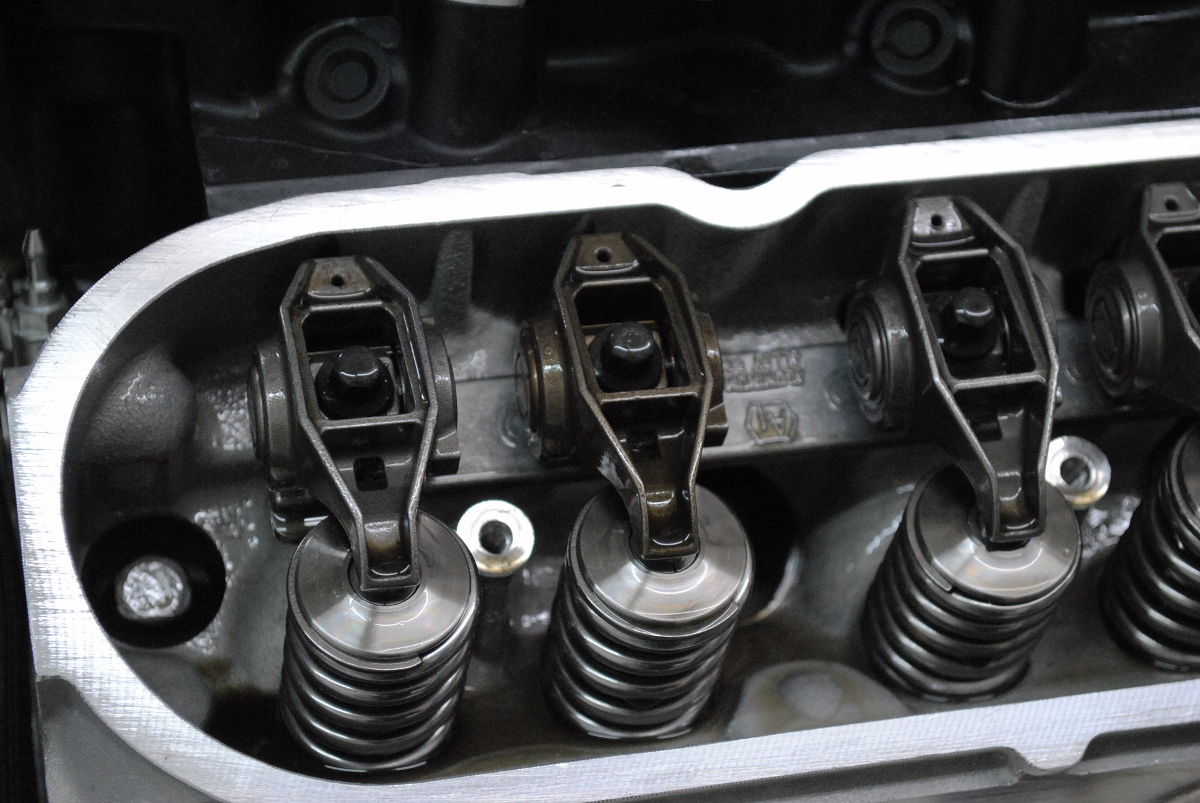
Though full roller rockers are available for LS applications, we elected to stick with the factory rockers on the 383.
The 4.0-inch crank combined with the 3.905-inch bore produced a finished displacement of 383 inches. This stroker was fortified with a COMP 281LR HR13 cam that provided a .617/.624 lift split, a 231/239-degree duration split, and 113-degree lsa. The cam was combined with new drop-in replacement lifters and hardened pushrods from COMP Cams.
The short block was topped with a set of CNC-ported LS heads from Speedmaster. The CNC heads flowed over 300 cfm, or more than enough to support our power needs. The heads were treated to a dual valve-spring package that provided adequate pressure and coil-bind clearance for our cam profile. Feeding the heads was a FAST LSXRT intake and matching 102-mm, Big-Mouth throttle body. Controlling the 75-pound FAST injectors was a FAST XFI/XIM management system.
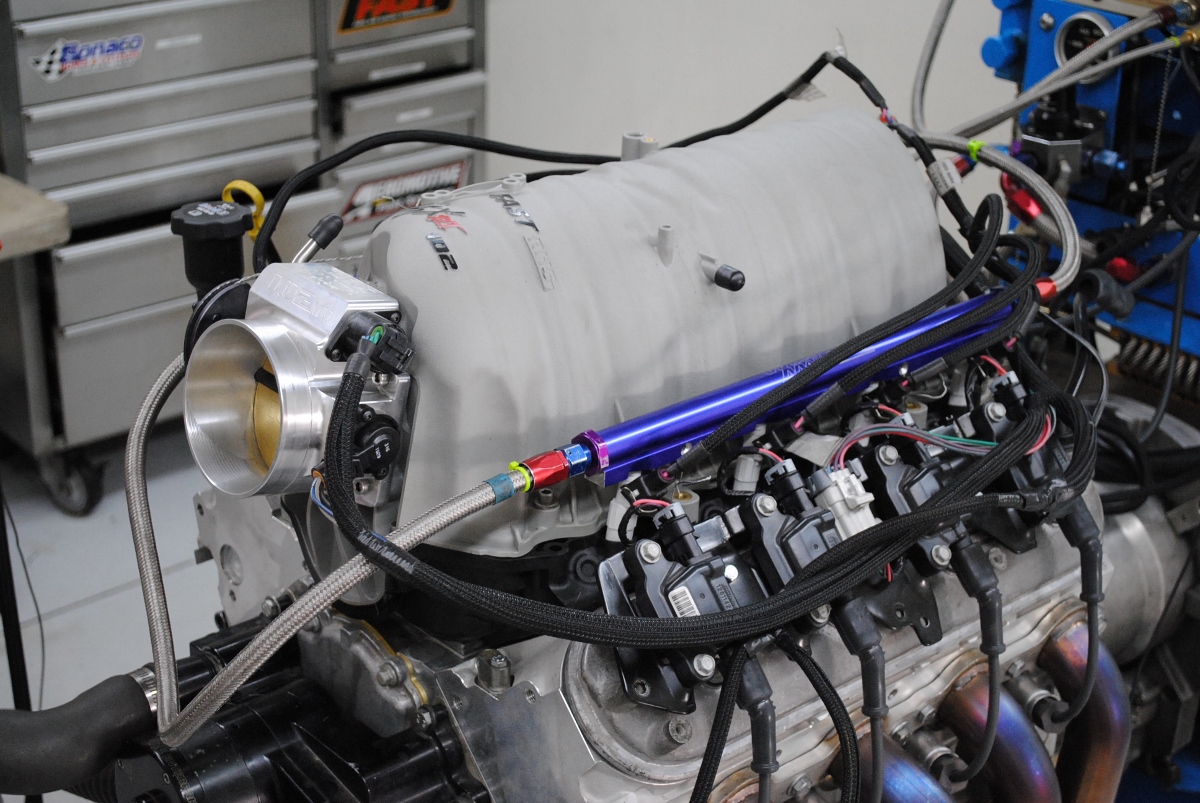
Topping the ported heads on the 383 stroker was a FAST LSXRT intake and matching 102mm, Big-Mouth throttle body.
Run in anger after the build and break in, the 383 produced 544 hp at 5,900 rpm and 514 lb-ft of torque at 4,800 rpm. That represented a sizable jump over the 353 hp and 384 lb-ft of torque produced by the stock 5.3L. Now it was time for some Zex!
The Zex Perimeter Plate Blackout system was designed specifically for LS applications. The trick system featured a unique intermediate plate designed to sandwich between the throttle body and intake manifold. The design team at Zex even went so far as to make the plate a direct fit for all 90mm (factory) and larger aftermarket manifolds. This obviously included the FAST LSXR and LSXRT intakes.
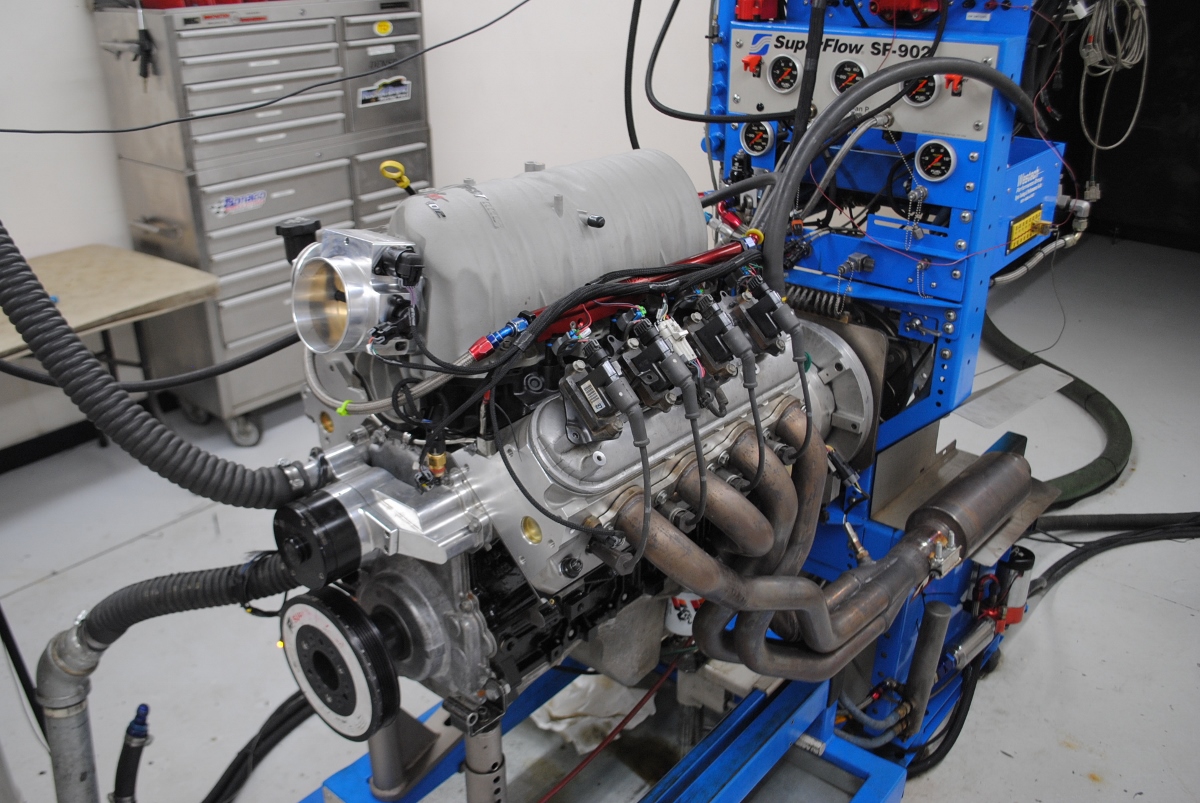
Run on the dyno with long-tube headers, the modified 383 stroker produced 544 hp at 5,900 rpm and 514 lb-ft of torque at 4,800 rpm. So far, the bolt-ons were working well.
Credit a machined (o-ringed) insert for the adjustability to step down the 102mm opening to fit the smaller 90mm throttle bodies and intakes. Online information indicated that the Zex Perimeter Plate system offers a number of interesting and potentially powerful design features, including Perimeter Injection, Cryo-Sync, and Airflow Enhancement technology.
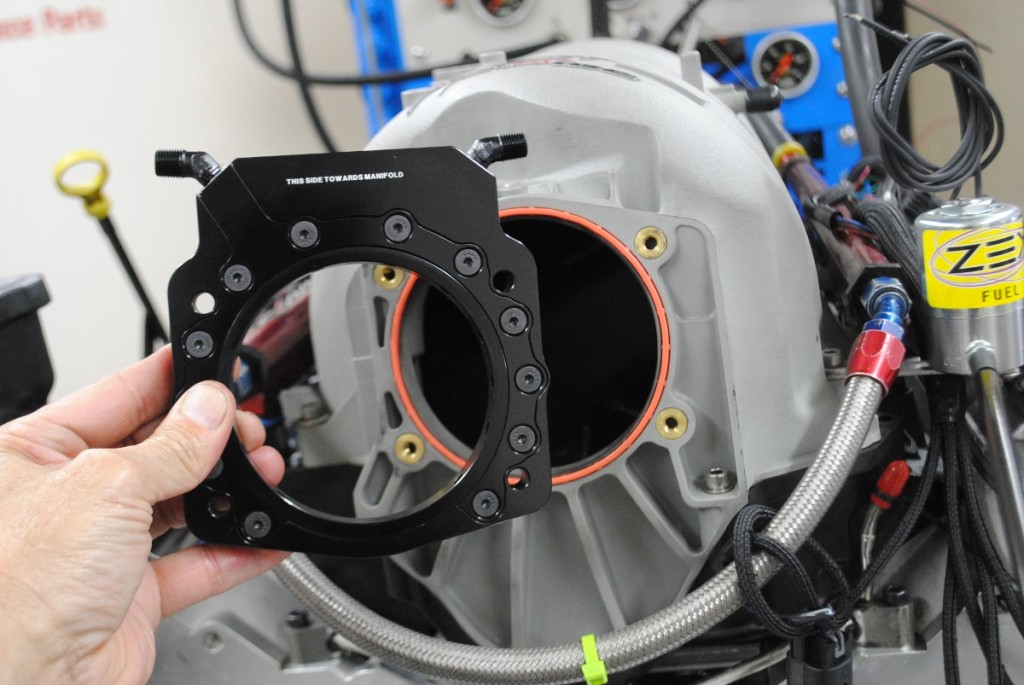
The boost-in-a-bottle portion of the equation was supplied by Zex in the form of their Perimeter Plate. The trick plate featured an insert (with o-ring) to size the opening for the desired throttle body. The plate was even labeled for proper orientation.
The Perimeter Injection employed 12 separate injection points that combined both nitrous and fuel to optimize atomization and distribution in the manifold. The introduction of nitrous at -127 degrees effectively turned the plate into a Cryo-Sync (or heat isolator). The high-pressure flow nitrous through the spacer plate also worked to create a low-pressure zone to further enhance airflow into the motor.
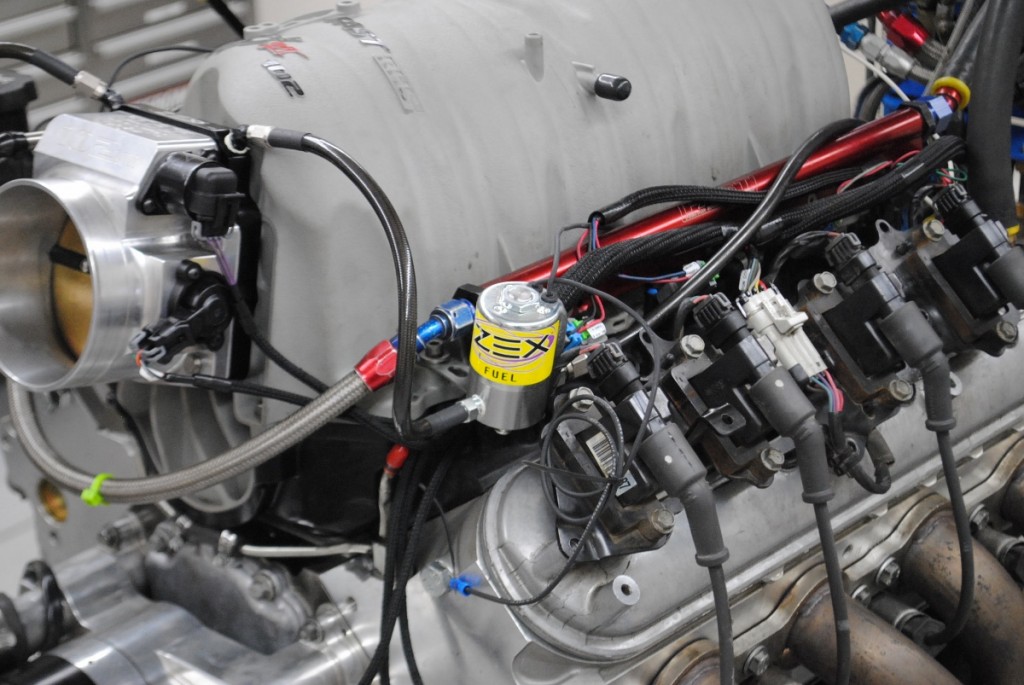
Both the fuel and nitrous solenoids were bolted in place to the FAST intake manifold. The kit featured black braided lines to feed nitrous and fuel from the solenoids to the jetting on the Perimeter plate.
For our test, we set up the Perimeter plate system with jetting to supply an additional 150 hp. The Zex system is adjustable from 100 to 250 hp, so the available jetting had no problem supporting our power needs. We heeded the advice supplied with the nitrous kit and retarded the timing by six degrees for the 150-hp shot. To hedge our bets, we splashed the 91-octane pump gas with some 100-octane Rockett Brand race fuel.
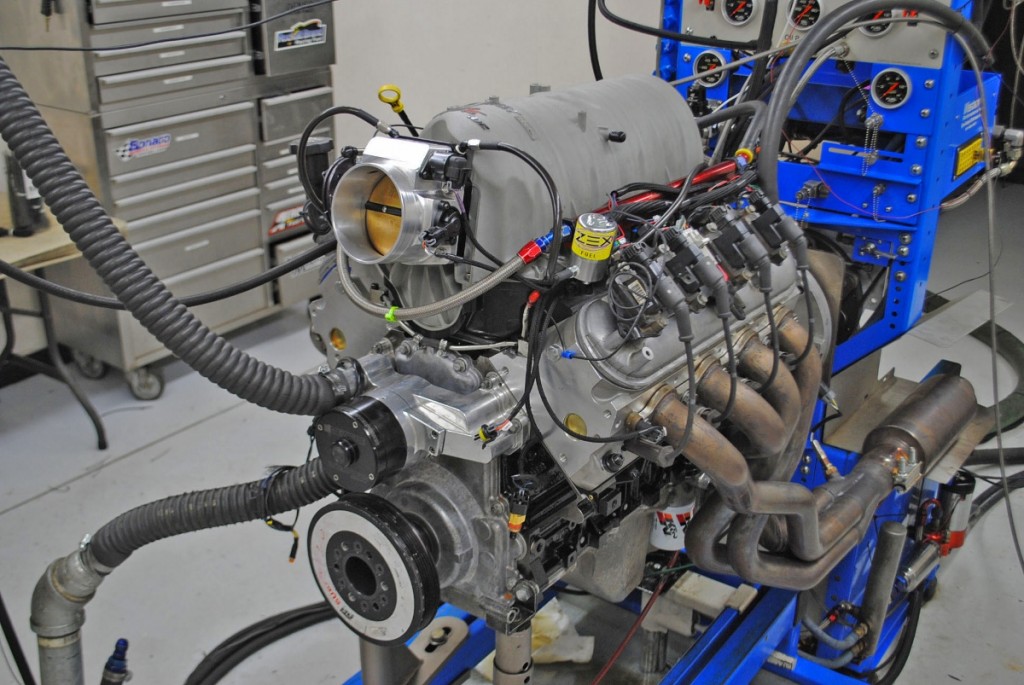
Run with the Zex Perimeter Plate equipped with 150-hp jetting, the nitrous-injected 383 produced 695 hp and 696 lb-ft of torque.
The 383 relied on a manual throttle body for this test, but it is important to point out that the Zex Perimeter Plate system was also designed to run on drive-by-wire applications. All we can say is we love testing nitrous, as activation of the kit brought with it a jump in power to 695 hp at 5,900 rpm and 696 lb-ft of torque at 5,000 rpm.
Upon activation, the Zex Perimeter Plate kit offered consistent gains through the tested rev range. The modified stroker offered plenty of power over the stock 5.3L, but what really made it sing was the Zex nitrous kit. So which is better, bolt-ons or the bottle – the answer is obviously both!
Sources:
ATI; atiracing.com, COMP Cams; www.compcams.com, Edelbrock; www.edelbrock.com, FAST; www.fuelairspark.com, Holley/Hooker; www.holley.com, Mahle Motorsports; www.mahlemotorsports.com, MSD; msdignition.com, Speedmaster; speedmaster79.com, Total Seal Rings; totalseal.com, Zex; www.zex.com



